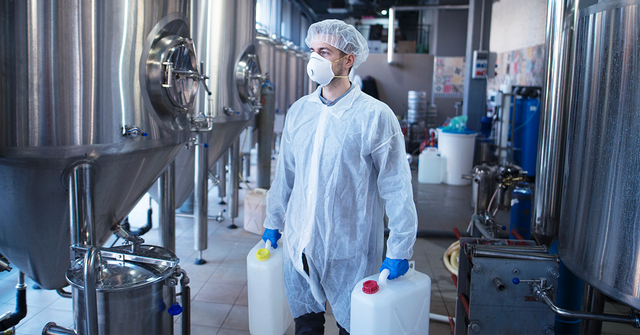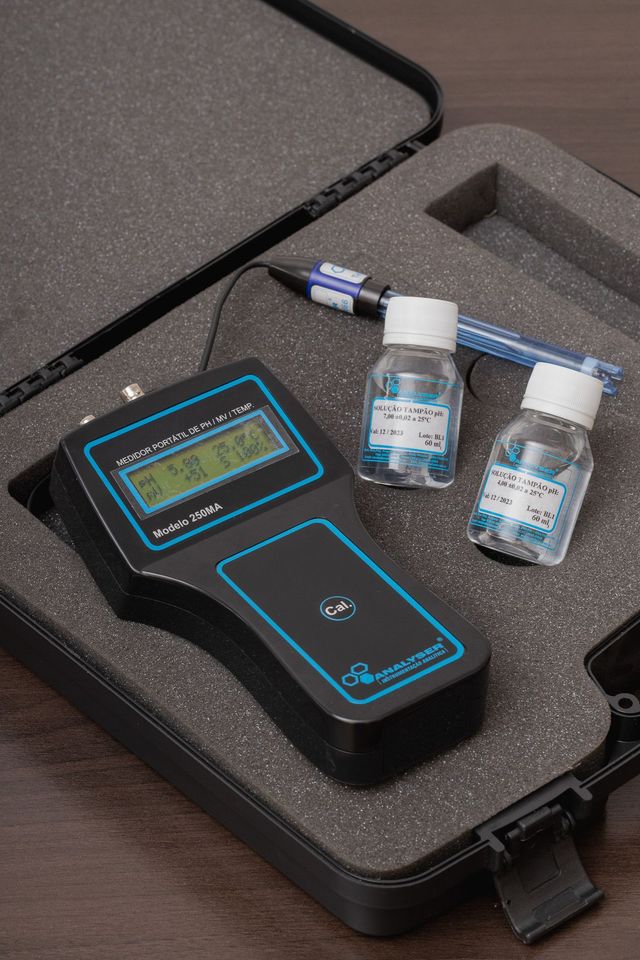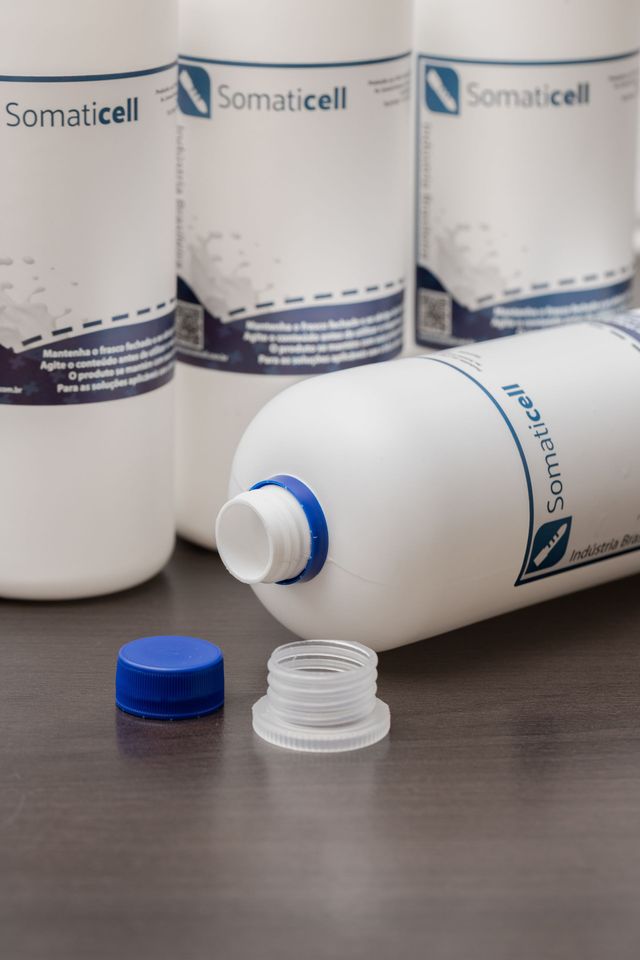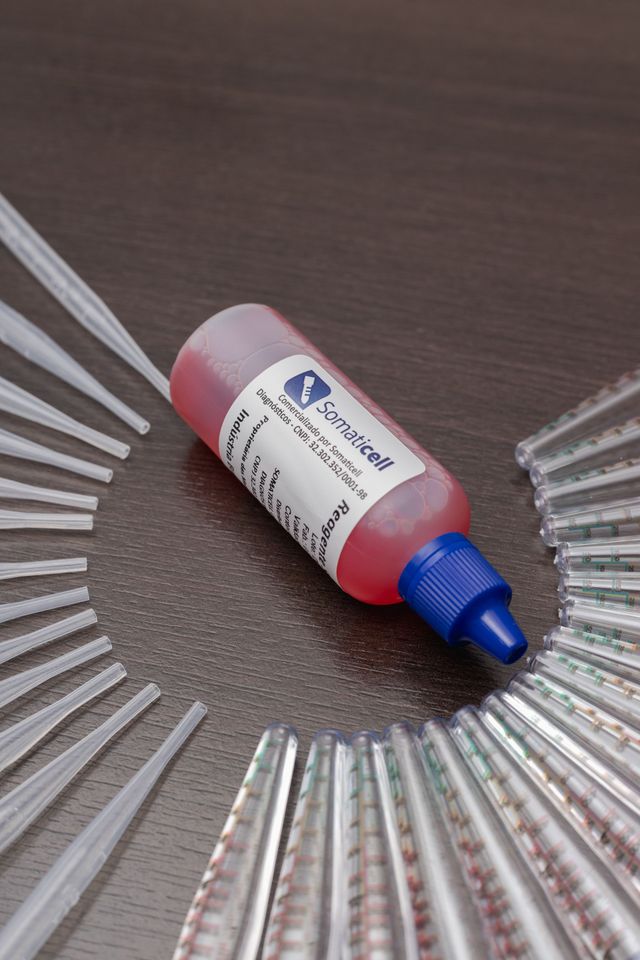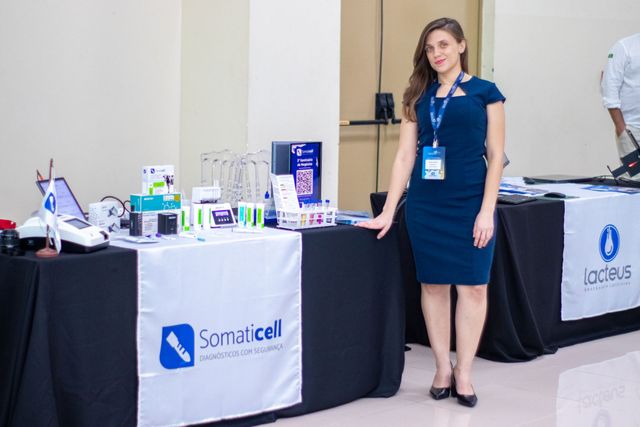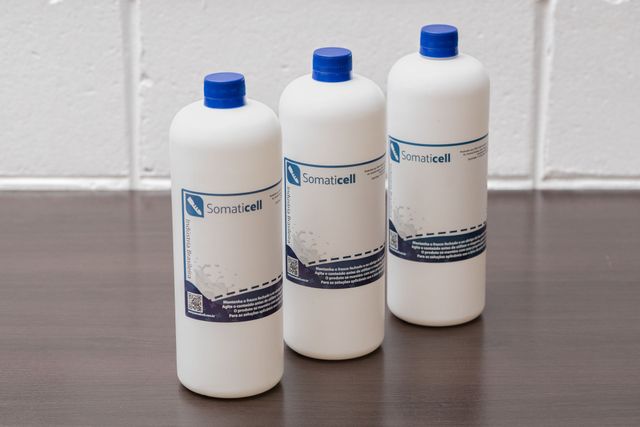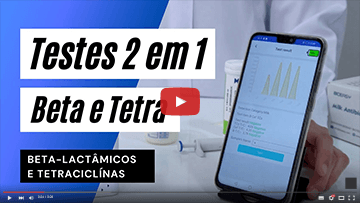CMP (caseinomacropeptide): What it is and how it serves as a parameter for milk quality
Caseinomacropeptide (CMP) may help detect milk fraud
Milk is an important product in Brazil, its production chain is part of the country's main economic activities. Milk production involves more than one million producers in the field, and in 2019, the gross value of primary milk production reached almost R$35 billion.
Em todo o país, milhões de trabalhadores se dedicam à produção do leite, seja para o consumo doméstico, ou para a exportação. Tendo em vista esses números, a cadeia produtiva do leite é a sétima maior dentre os produtos agropecuários nacionais.
Assim, partindo dessa realidade, é notória a preocupação desses produtores com o controle da qualidade dos produtos lácteos, considerando as constantes descobertas de fraudes no país.
One of the most common economic frauds applied to milk is the addition of cheese whey, a practice prohibited by Brazilian law. Thus, bench techniques are used to recognize these adulterations.
These techniques that unite both chemical and biological aspects of the composition of milk and its derivatives are of paramount importance for the detection of fraud. Among them, the most famous for the detection of whey in milk is the identification of CMP (caseinomacropeptide).
To broaden the understanding of the topic, in this article we will address the following topics:
- Fraud by adding whey
- What is CMP (caseinomacropeptide)?
- CMP and psychrotrophic microorganisms
- Precautions when receiving the sample
- Brazilian legislation and the evaluation of milk quality
- Ways of detecting CMP
Read on!
Fraud with the addition of whey
Fraud in milk and dairy products is not just a matter for Brazilian products.
In fact, this practice is common in other countries as well, being a worldwide problem in terms of economics and public health.
In addition to harming the consumer, changes in milk composition, either by adding or removing components, incorrect labeling, presence of antibiotics, among other factors, can cause malnutrition and health problems.
Among the various forms of adulteration of milk, the addition of whey is a fraud that deserves to be highlighted.
That's because this is a component of milk itself. Thus, detection can be very difficult to perform using low-cost techniques.
Another issue regarding serum fraud is its value. Whey is a by-product of cheese production. As a by-product, cheese whey has low commercial value, but it generates a high yield of milk, increasing its volume. Thus, what would be discarded becomes an illegal milk additive that they sell as “pure”.
However, we know that this practice greatly reduces the quality of milk. This is because there is a decrease in nutritional value, change in the quality of derivatives, decrease in shelf life, in addition to the risk to the health of consumers.
The verification of frauds with the addition of cheese whey can only be done through laboratory tests with specific techniques. The main way of detecting cheese whey in milk is by analyzing the caseinomacropeptide index (CMP).
What is caseinomacropeptide (CMP)?
In cheese making, k-casein is found in fresh milk under the action of renin, a coagulation agent.
This coagulant acts specifically between the binding of 105 and 106 amino acids (Phe-Met), releasing a hydrophilic macropeptide containing 64 amino acids (106 to 169), linked to N-acetylneuraminic acid (NANA) or sialic acid.
We also know this fragment as glycomacropeptide and found it in cheese whey.
However, the term CMP is commonly used, since κ-casein contains varying amounts of carbohydrates and there is the possibility of containing fragments without carbohydrates.
As the terminal peptide is called caseinomacropeptide (CMP) and will always be present in cheese whey, this is the parameter used to detect this by-product.
Thus, in case of fraud by adding cheese whey to milk, the caseinomacropeptide levels are increased.
Caseinomacropeptide and psychrotrophic microorganisms
The big problem in detecting cheese whey in milk is due to the proteases that are produced by psychrotrophic microorganisms that also increase CMP. These bacteria are able to develop at temperatures below 7ºC.
Thus, the action of these proteases can result in positive CMP, called pseudo-CMP, coming not from the addition of whey, but from poor quality milk, already deteriorated by time or poor refrigeration conditions.
Knowing that these thermostable proteases of bacterial origin can interfere with fraud detection, how to deal with this situation?
Para isso, o Map (Ministério da Agricultura, Pecuária e Abastecimento) define os critérios necessários para a prática de refrigerar o leite na propriedade rural.
Com esses critérios, são regulamentados os transportes em caminhões isotérmicos, entre outros parâmetros, definidos na Instrução Normativa 51.
Through these precautions, it is possible to reduce the actions of bacterial proteases, in order to avoid false positives.
Generally, raw milk is kept under refrigeration for periods ranging from 24 to 96 hours, from milking to final processing.
Knowing that 96 hours exceeds the period of 2 days that protects the milk from possible excessive contamination by psychotrophic organisms, it is necessary to better rationalize the collection and transport process.
Undoubtedly, refrigeration immediately after milking decreases the multiplication of mesophilic bacteria that cause milk acidification.
However, this is not the only problem producers have. In fact, the act of just refrigerating it ends up favoring the psychrotrophic microbiota, which causes several changes in milk and its derivatives.
Main psychrotrophic microorganisms
Psychotrophic bacteria can be a big problem for dairy farmers, given their adaptability for growth.
These microorganisms can grow at temperatures equal to or lower than 7º C, regardless of their optimal growth temperature (usually between 20 and 30º C).
Psychrotrophic microorganisms can be of the following types:
- Gram negatives: Pseudomonas, Achromobacter, Aeromonas, Serratia, Alcaligenes, Chromobacterium e Flavobacterium
- Gram positive: Bacillus, Clostridium, Corynebacterium, Streptococcus, Lactobacillus e Microbacterium spp.
Of these bacterial genera, Pseudomonas deserves the most attention. These bacteria represent about 10% of the microbiota of freshly milked milk.
Even in a relatively low amount, these are the psychotrophs that predominate in the microbiota of raw or pasteurized milk, when deteriorated under refrigeration.
In particular, studies published in the Revista do Instituto de Laticínio Cândido Tostes in 2009 indicate that, in refrigerated raw milk, among the species, P. fluorescens is predominant.
The extracellular enzymes present in this species of bacteria can act on raw milk. And to make matters worse, they have the ability to resist heat treatment, which can result in defects in taste, aroma and texture, for example.
Care in receiving samples and quantification of CMP
In order to avoid confusion between fraud due to the addition of cheese whey to milk and the action of bacterial proteases, the time between milking and the test should be a maximum of 48 hours. This reduces the possibility of error or false-positive result in the detection of fraud by adding whey to milk.
It is very important that the milk producer manages to control the bacterial load of the entire production chain.
We know that storage at temperatures below 7º is necessary, however, this alone is not enough. That is, to improve milk quality, it is extremely important to maintain operational hygiene, from the milking phase to receiving the milk sample for analysis.
In this way, it is possible to reduce the initial contamination with psychotrophic bacteria with proteolytic potential to a minimum. Depending on the amount of whey added to the milk, it is possible that the increase in CMP due to the action of P. fluorescens bacteria is less significant.
It is worth noting that the milk that is considered suitable for consumption is the one that has CMP concentrations lower than 30 mg/L. If the milk is destined for the production of dairy products, the CMP may have values between 30 and 75 mg/L.
Brazilian legislation and the evaluation of milk quality
According to data from the Food and Agriculture Organization of the United Nations, Brazil is the third largest producer of milk in the world, behind only the United States and India.
In view of Brazil's significant participation on the world stage, there will certainly always be inspections to take care of the quality of this product, which is so important for the country's economy.
In this bias, federal, state and municipal organizations are articulated under the light of the legislation to fight fraud and protect the consumer.
Brazilian legislation uses the quantitative determination of caseinomacropeptide (CMP), resulting from the proteolytic action of enzymes, as a criterion for assessing the quality of milk, and considers milk with CMP concentrations above 75 mg/L to be inappropriate for human consumption.
Ways of detecting CMP
We have seen so far that it is of paramount importance to be careful with refrigeration during the transport period of the milk sample, in view of the presence of psychotrophic microorganisms.
It is necessary to have this prior control, before seeking the reasons for the increase in CMP in milk, whether due to bacterial growth or the addition of whey.
With the previous precautions in mind, the best way to detect CMP (caseinomacropeptide) amounts is through the HPLC method, which stands for High Performance Liquid Chromatography.
Through this analysis, it is possible to perceive the quality of the milk and evaluate its ability to convert it into derivative products such as cheese and yogurt, which are dependent on intact casein.
Always safeguard the quality of milk production
The concern with the quality of milk is something worldwide, in view of the importance of this agricultural product for consumers and industries that produce derivatives.
In this sense, it is necessary that the parameters that protect the original composition of the milk are always within normal limits.
Knowing that Brazil, the third largest milk producer in the world, still suffers from economic fraud such as the addition of cheese whey, the use of analytical methods is suggested to attest to the quality of the product.
Therefore, following the recommendations of the Map, analysis of the caseinomacropeptide (CMP) index, a portion of the K-casein molecule soluble in serum, should be adopted.
It is important to remember that it is not just whey that increases CMP levels. As discussed in this article, the action of proteases produced by psychotrophic microorganisms can interfere with this test, leading to false-positive results for fraud.
Therefore, the storage of milk must be carried out in accordance with the requirements of the Ministry, within two days, at a temperature equal to or lower than 7 ºC.
In this way, throughout the production chain, it is necessary to consider this time, from milking to arrival at the analysis laboratory.
Thus, by following these parameters, the possibility of error or false-positive result in detecting fraud by adding whey to milk is lower.
Sabendo que os resultados devem ser os mais assertivos possíveis, é necessário confiar em quem tem experiência e autoridade na área para realizar as suas análises. Então, conte com a Somaticell.
We work with the identification of CMP through the use of HPLC, always bringing the best results for you!
Para saber mais informações sobre nossos serviços, entre em contato com a gente e fale com um de nossos especialistas!
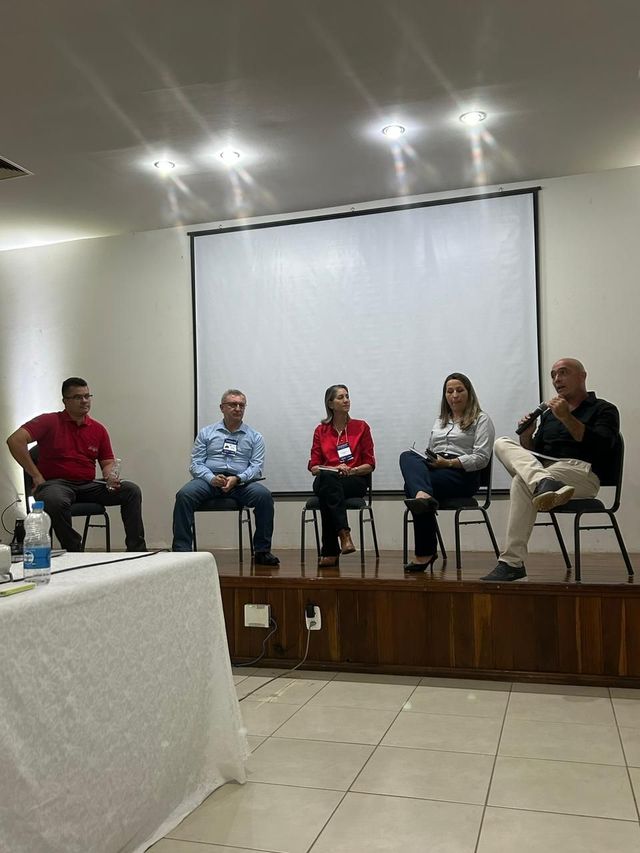
Discover our App
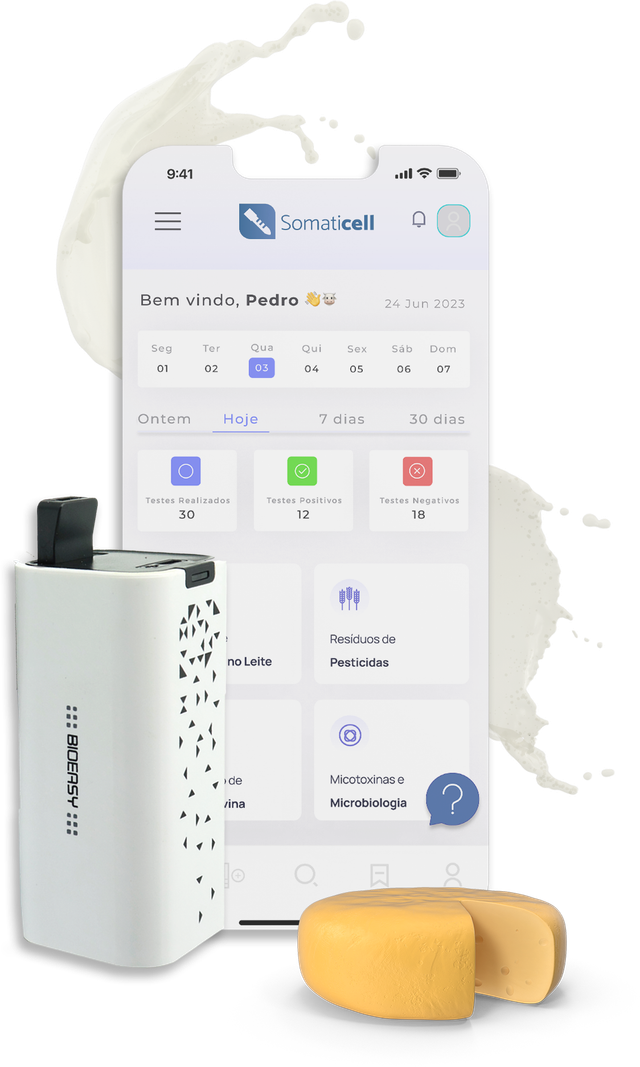
Our Educational Videos
Somaticell on Social Networks


